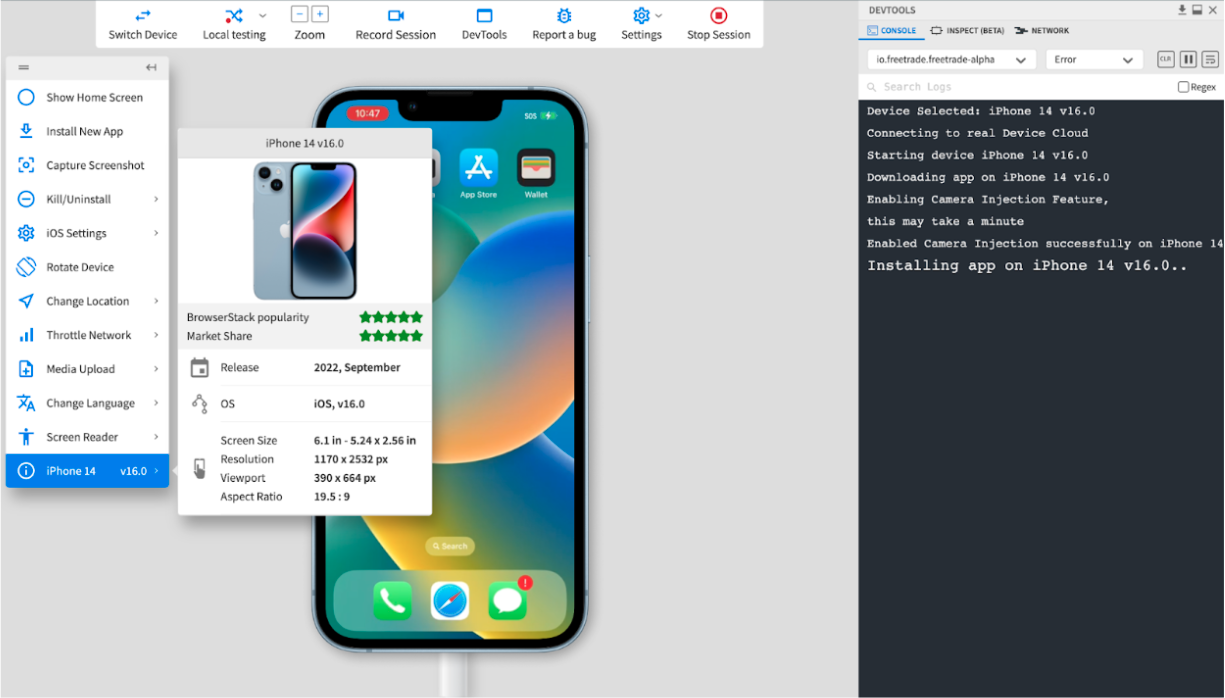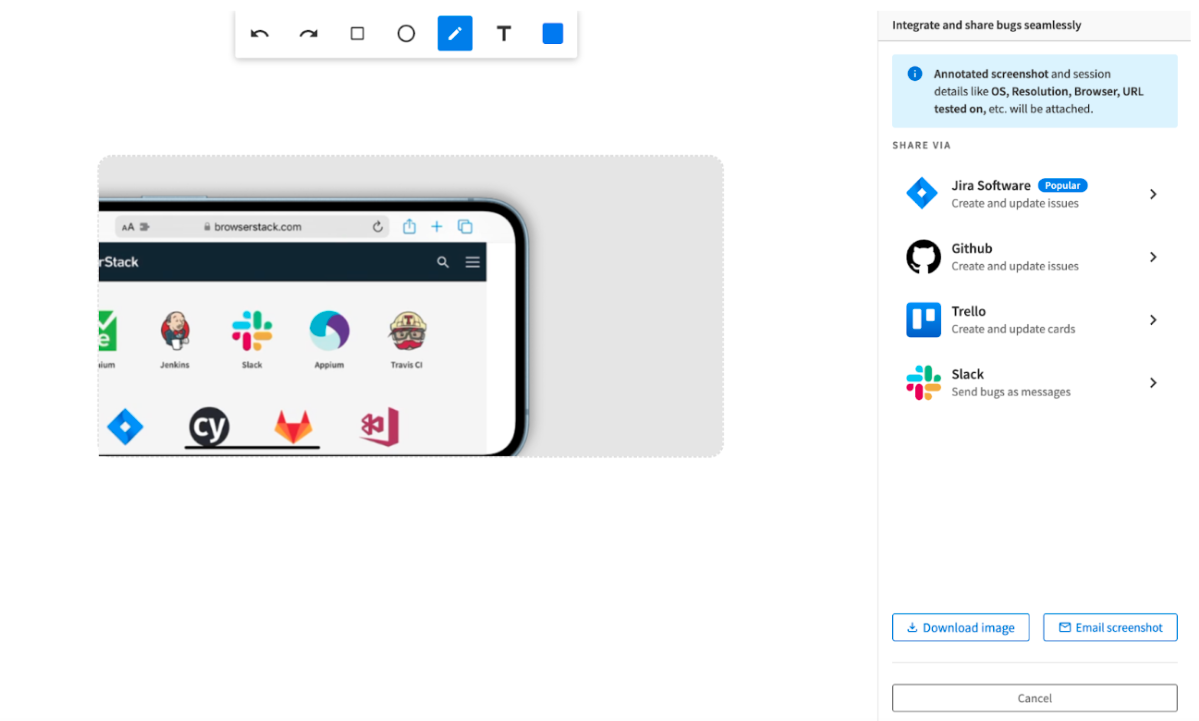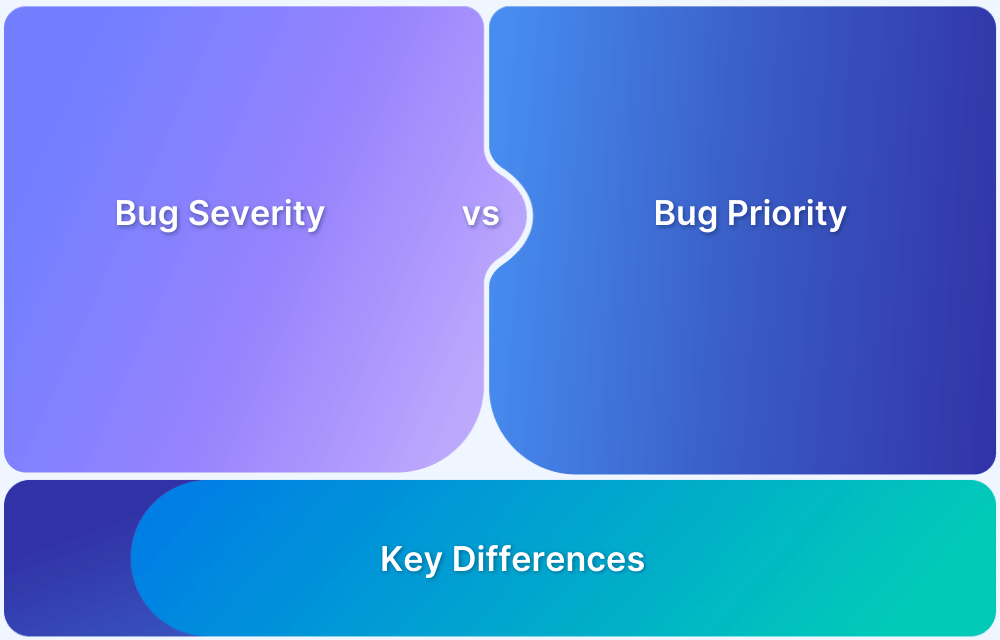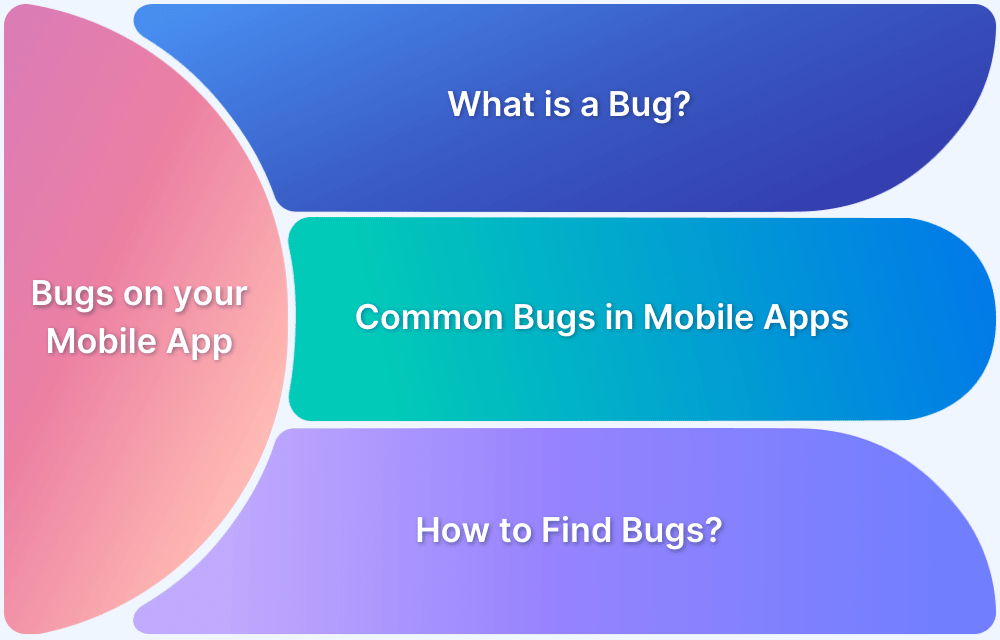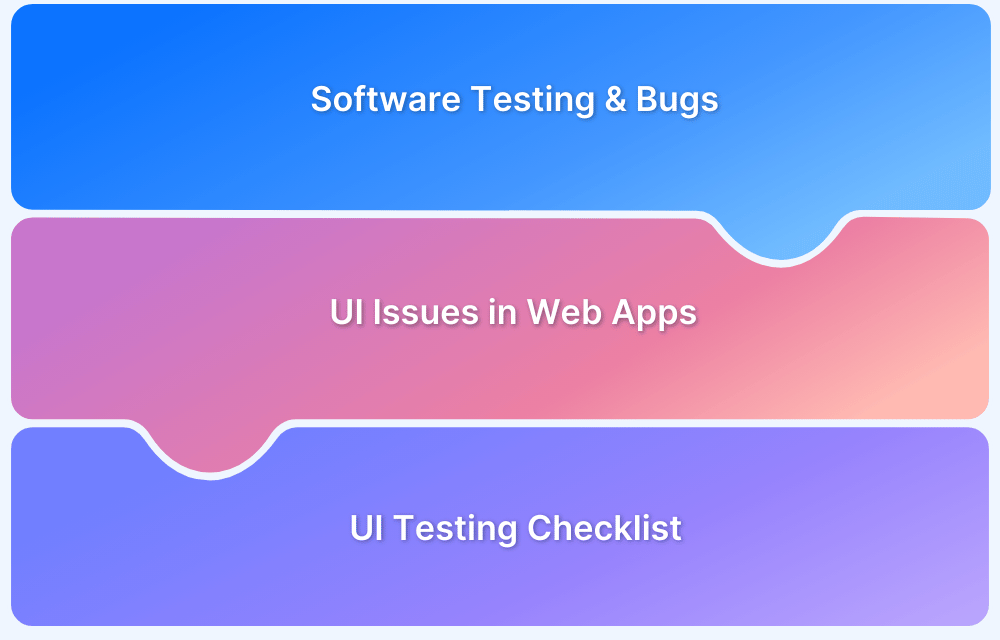Bug triage is the systematic process of reviewing and classifying reported bugs according to their severity and impact on the software application.
This process is crucial in ensuring that discovered bugs are properly prioritized, assigned to the appropriate developers, and efficiently resolved.
This article will give a detailed overview of what is a bug triage.
What is a Bug Triage/Defect Triage?
To implement a defect triage system in your organization, it’s essential to understand the entire process. In this procedure, the bugs are identified. Then each bug is prioritized based on the following –
- Severity
- Frequency of appearance
- Risk at stake
Apart from the method mentioned above of prioritizing bug finding, other factors also need to be considered. The software testing or Quality Assurance system is also helpful in determining how fixing a following should be prioritized. This is entirely based on the factors that have been mentioned.
Points to focus on while running the Bug Triage Process:
- The defect triage process involves identifying and prioritizing tracker issues and assuring that the reported bug is an improvement feature or a request feature.
- It is also important to assess whether all this has been appropriately managed.
- After the Quality Assurance Team begins the test execution process, they start the reporting phase, informing the rest of the team about the bugs. That is when the Defect Triage Meeting is organized.
Why do you need a Bug Triage?
The objective of having a Bug Triage system in an organization is to assess the process, sequence all these necessary processes and allocate how to resolve the bugs that have been discovered.
- During the entirety of the process, the team needs to confirm how problematic the bug is. Then it needs to assess what processes it requires to be fixed.
- How would they be making those required changes as per the requirement? It could be a momentary defect or something recurring.
- They should also be able to resolve any additional issues as laid out by the client.
- After finalizing the method(s) in which they would resolve the bugs and allocate the resources for their elimination, they would get down to work.
Another notable feature of the Bug Triage Process is that this system is mainly used in Agile Project Management.
How often should you perform Bug Triage?
The frequency of defect triage varies based on the project’s size, complexity, and urgency.
Bug triage should be performed during the following stages:
- Project initiation: Conduct a triage session at the beginning to detect any potential issues early and establish a clear process for managing defects.
- After each development phase: Regular triage after every development phase ensures that defects are addressed before advancing to the next stage.
- Before releases: A thorough triage session should be held before each release to minimize the chances of defects being encountered by end users post-launch.
- Ongoing throughout development: Conduct regular triage sessions to identify and resolve new defects as they arise promptly.
What to expect from Bug Triaging
The conclusion of each meeting will be done by providing each member who is present at the meeting with the bug triage statistics. All the report data will be handed out, and the issues present in these reports are expected to be resolved, or some action will undoubtedly be taken. The discussion of the meeting will be recorded so that it is helpful in future meetings.
How to set up bug triage process
Defect triage is a structured process for prioritizing and efficiently addressing reported bugs. It consists of multiple stages, each with specific tasks and questions.
Here’s a comprehensive overview of the process:
The Primary or the Initial Screening
In the first phase of setting up a bug triage process, it’s important to determine whether the reported issue is a valid bug or can be managed in other ways.
The key questions in this stage are:
- Is it a request or a help issue?
- Has the defect been correctly pointed out, or is it a mistake in observation?
- Has any previous report on this issue been mentioned?
- Is it an issue arising out of an unsupported version?
- Is it an issue arising out of usability?
- Will this problem be resolved if a plugin eliminates the defects?
- Has it been caused because of third-party plugins?
- Is the solution a rational one?
- Can this issue be replicated or cloned in any manner?
The Confirmation Phase
Once an issue passes the initial screening, the next step in the bug triage process is to confirm the validity of the bug and gather more detailed information.
The key questions in this stage are:
- What is the security level of the issue before and after the bug resolution?
- Has the summary of the bug been provided to the relevant members?
- What is the priority level assigned to each bug?
- What effect does the resolution bring out in the current version?
- Is the bug resolution process being documented?
The Follow-up Phase
Keeping the reporter informed about the bug’s status is essential in this phase.
The key questions in this stage are:
- Is the bug issue still lingering?
- Are any new resolutions required in the current version after the bug rectification?
- Are all the software product/service packages still relevant after fixing bugs?
- Are there any other duplication issues left?
- Are there any other bugs left?
These phases and questions summarize the whole Bug Triage Process.
Periodic Review
In the final phase of the bug triage process, triaged bugs must be regularly revisited to ensure they are still appropriately prioritized and to check the progress of fixing them.
Once a bug has been resolved, ensure it’s closed in your tracking system, and notify the original reporter if necessary.
Examples of some key questions in this stage are:
- Is the bug still active, or has it been resolved?
- Does the bug require additional changes or revisions after the initial fix?
- Have any duplicate or related issues emerged after fixing the bug?
What is a bug triage meeting?
A bug triage meeting is essential for managing and prioritizing bugs. During these meetings, key stakeholders review and categorize each reported defect based on its severity, risk, and impact.
The defect triage meetings, also called bug Councils, are then divided into various project meetings according to the resolution situation.
Read More: Bug Severity vs Priority in Testing
Bugs are classified into three categories:
- Defects to Fix Now – Critical bugs that need to be addressed immediately due to their high impact.
- Defects to Fix Later – Non-urgent bugs that cause minor issues and can be resolved later.
- Defects We’ll Never Fix – Bugs with little to no impact and don’t require fixing.
The frequency of these meetings depends on factors such as the
- project schedule
- the number of defects
- team availability
- overall project health
Bugs are reprioritized, reassigned, or discarded as needed, and all decisions are documented for transparency.
Roles and Responsibilities During Bug Triage
Below are the key roles and their responsibilities.
| Role | Responsibilities |
|---|---|
| Facilitator |
|
| Project Manager |
|
| Quality Assurance (QA) Lead |
|
| Development Team Representative |
|
Bug triage Tools
Here are some commonly used Bug Triage tools:
BrowserStack
Using BrowserStack for bug triage simplifies the process by offering real-time debugging tools and detailed logs across multiple platforms.
Debugging on real devices helps to understand and debug the application’s behavior in real user conditions. BrowserStack’s Real Device Cloud provides access to 3500+ different devices, browsers, and OS combinations. It is an all-in-one solution for efficient bug triage, making tracking, prioritizing, and resolving defects easier.
Bugzilla
Bugzilla is an open-source bug-tracking system designed for efficient defect management and triage. It features advanced search and reporting features and is good for managing large volumes of bugs but has challenges with a less modern user interface.
Marker.io
Marker.io is a visual bug-reporting tool that allows teams to capture, annotate, and share screenshots with detailed bug reports directly from the browser. It is good for streamlining the bug reporting process with visual context, but some users may have challenges integrating it into existing workflows.
MantisBT
MantisBT is an open-source bug-tracking tool that focuses on simplicity while offering robust features like email notifications and role-based access control. It is good for small teams with straightforward needs but has challenges handling large-scale projects due to limited integrations.
FogBugz
FogBugz is a comprehensive project management and bug-tracking tool that helps teams efficiently manage software development and bug triage. It is good for its intuitive interface and robust tracking features, but it has challenges with scalability for larger teams and projects.
Best Practices for Bug Triage
Here are some best practices to enhance the bug triage process:
- Define a consistent method for prioritizing, assigning, and tracking bugs to clarify team roles and responsibilities.
- Use automation tools to streamline bug triage in large projects. Assign developers based on specific features and ensure integration with bug-tracking systems.
- Schedule frequent triage meetings to promptly address new issues, involving all relevant stakeholders for effective collaboration.
- Track bug triage metrics to identify trends and recurring issues, informing improvements for future releases.
- Offer training and resources to development and QA teams to enhance their understanding of the triage process, which will lead to more effective bug resolution.
How does BrowserStack help in the Bug Triage Process?
Since the sole objective of Bug Triage is the evaluation and prioritization of defect resolution, this process holds significance in the entire process of bug tracking and resolution. The frequency of meetings for the defect triage is therefore decided by considering team members’ overall project health and availability.
With BrowserStack, the triage process has become more flexible due to the range of debugging options available:
- Live: Pre-installed developer tools on all remote desktop browsers and Chrome developer tools on real mobile devices (exclusive on BrowserStack)
- App Live: Real-time Device Logs from Logcat or Console
- Automate: Screenshots, Video Recording, Video-Log Sync, Text Logs, Network Logs, Selenium Logs, Console Logs
- App Automate: Screenshots, Video Recording, Video-Log Sync, Text Logs, Network Logs, Appium Logs, Device Logs, App Profiling
Also, your team can choose from integrations and project management tools such as GitHub and Slack to simplify your bug triage process.
Conclusion
The bug triage process is important for maintaining high software quality and user satisfaction. By establishing clear procedures, using automation, and focusing on collaboration, the process can be streamlined, and teams can efficiently identify and resolve defects.
Choosing BrowserStack for bug triage enhances this process with its real device cloud, enabling thorough testing across various platforms.
Frequently Asked Questions
1. What is bug triage in agile?
Bug triage is a process utilized in agile and scrum methodologies to prioritize, monitor, and assess software defects. This essential aspect of software quality assurance brings together stakeholders to identify, classify, and allocate tasks for addressing reported bugs.
2. What is triage in bug life cycle?
Triage in the bug life cycle is the systematic evaluation, classification, and prioritization of reported bugs. This process helps teams determine which issues need to be addressed immediately and allocate resources effectively.
3. What is the difference between debug and triage?
Triage is about streamlining the workflow by identifying and prioritizing bugs. Debugging involves finding and correcting errors within the code.
4. What is the bug triage flow?
The bug triage process usually starts with reporting bugs and then evaluating their severity and priority. After that, bugs are assigned to the right team members for resolution, and their progress is tracked. Regular reviews keep the process efficient.
Useful Resources on Bug
Tutorial
- Bug Tracking: A Detailed Guide
- How to find Bugs in Software?
- How to find bugs in Android apps
- Understanding Bug Life Cycle in Software Testing
- How to find Bugs on your Website
- How to write an Effective Bug Report
- How to find Bugs on your Mobile App
- How to use Slack Bug Reporting while Testing
- Bug Bash: A Guide to Planning and Organizing
- How to report bugs in Appium UI Testing?
- How to use GitHub Bug Reporting while Testing
- How to Report Bugs during Visual Regression Testing
Tools and Tips
- 7 Common Types of Software Bugs every Tester should know in 2024
- 18 Best Bug Tracking Tools in Software Testing in 2024
- Why integrate with a Bug Tracking System?
- Different Types of Testing to Deliver a Bug-Free User Experience
- 5 Common Bugs Faced in UI Testing
Key Differences



